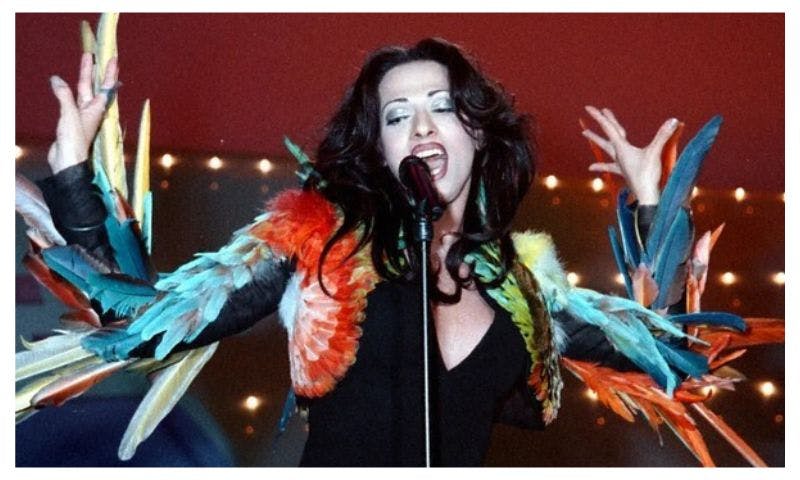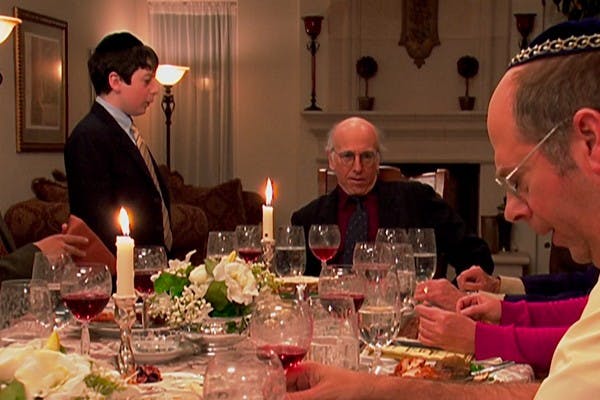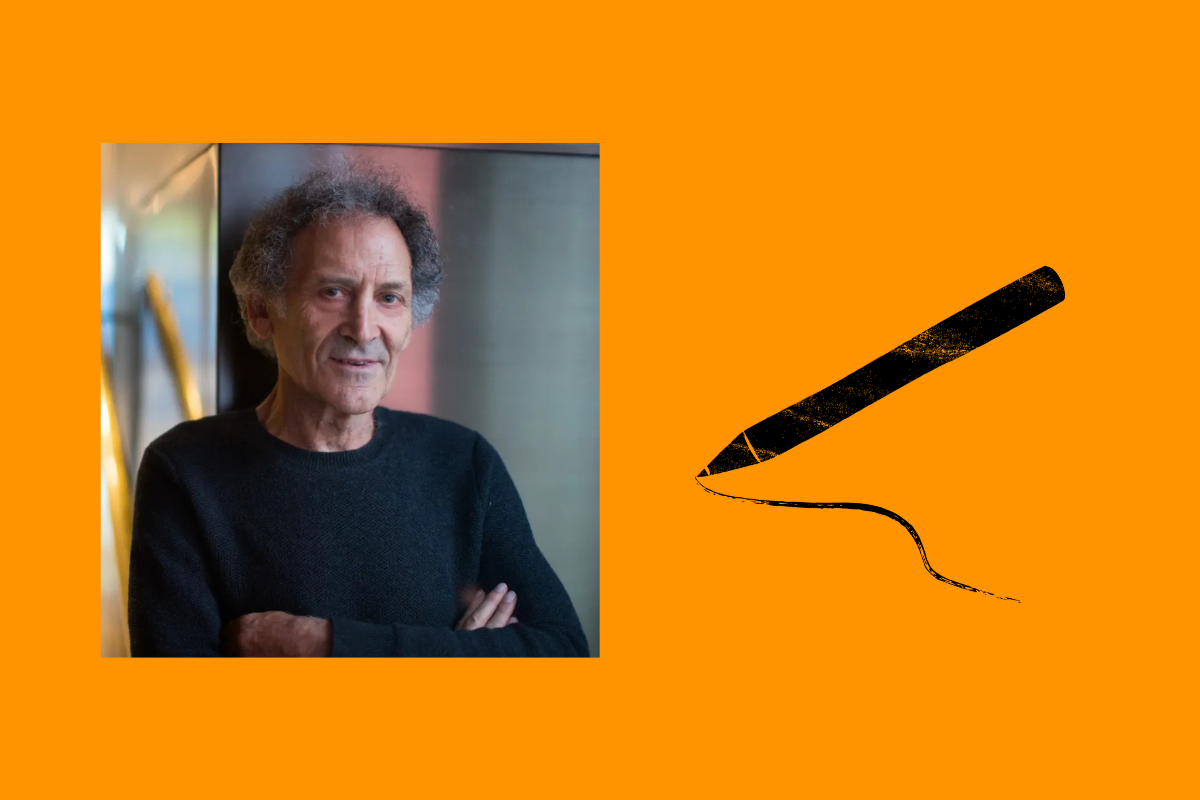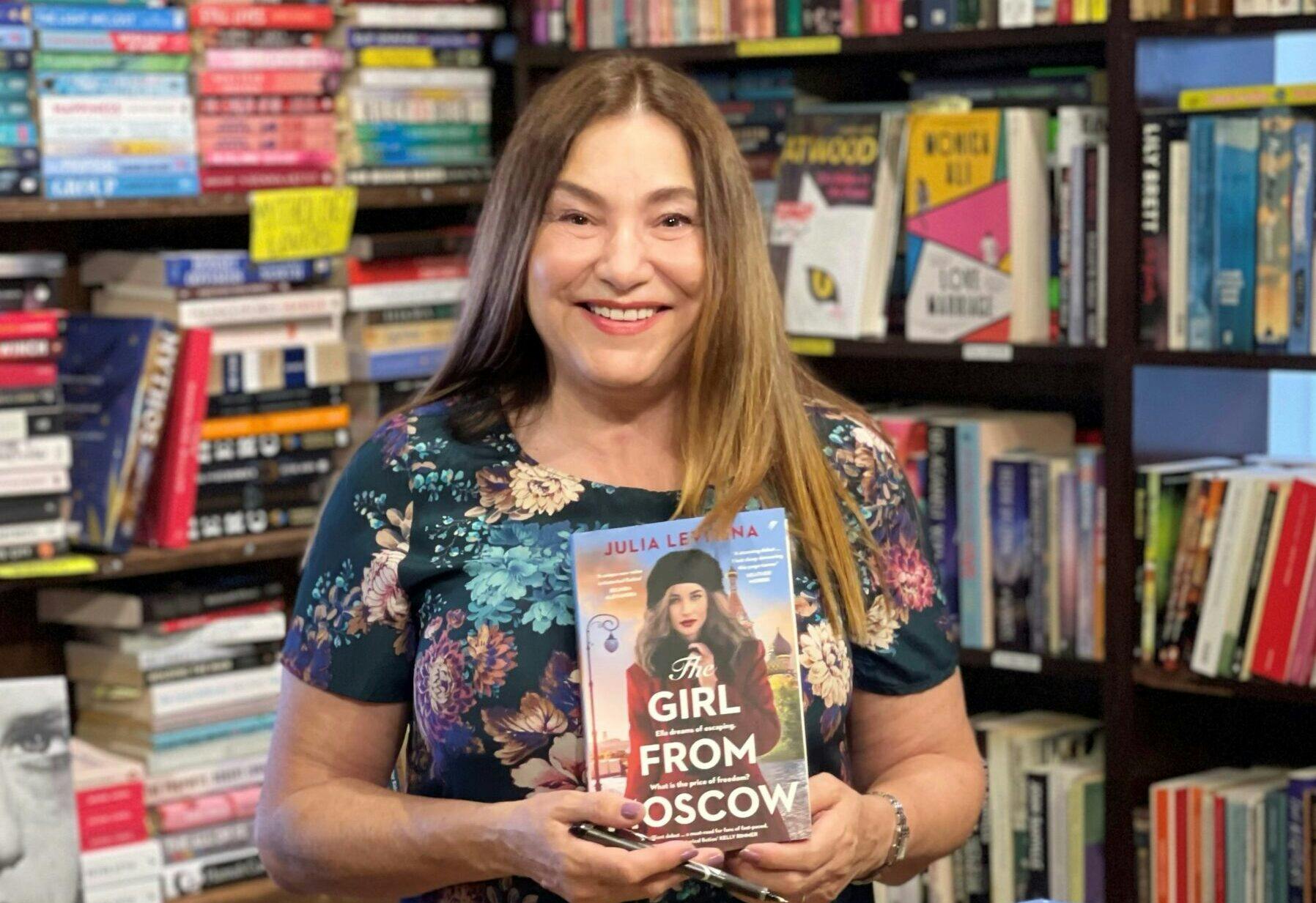Published: 16 May 2023
Last updated: 5 March 2024
From soaring poetic visions to cheesy Eurovision winners to hit television shows, SHAHAR BURLA selects the literature, music, film and art that encapsulate Israel’s unique culture.
When David Ben-Gurion envisioned Israel, he imagined a "melting pot" nation where Mizrahi and Ashkenazi, religious and secular, Yiddish and Arabic-speaking, would form a new, uniquely Israeli, identity and culture.
The core of the new culture would be the Sabra, the first generation secular Ashkenazi Israelis who were raised on the ethos of the Zionist labour movement. Ben-Gurion implemented the "melting pot policy" to create a new generation of migrants who would negate the exile and assimilate with the Sabra.
Today, as we celebrate the 75th anniversary of Israel's independence, we can see the results of Ben-Gurion's failed attempts to create the one-dimensional Israeli identity and negate the exile. The fuel for the deep separation between the supporters and opponents of the judicial overhaul is the sentiment of deprivation and exclusion, mainly felt by Mizrahi and religious Israelis, which is the result of the melting pot policy.
The three vectors that shaped the new Israeli culture were the melting pot policy of the 1940s and 1950s, the resistance to it in the 1960s and 1970s, and its collapse in the 1980s. These three waves, together and separately, created a rich, new and diverse culture. This new culture, along with the Hebrew language, even more than Judaism, is what connects Diaspora Israelis and many secular Israelis to their homeland.
For this special anniversary, I have chosen 10 chronological achievements of Israeli culture that also represent the three vectors of the melting pot that created the “Israeliness culture”.
- Natan Alterman (1910-70): Poet of a generation
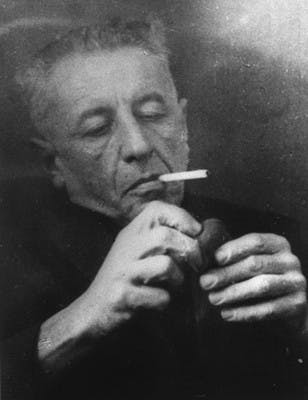
Nathan Alterman was born in Warsaw and in 1925, when he was 15 years old, his family moved to Tel Aviv. In 1933, he joined the literary circle "Together”, which published the magazine Columns and rebelled against the literary establishment of the time, which was identified with the “National poet” Hayim Nahman Bialik and his followers.
Alterman's first published book of poetry, Kokhavim Bakhuts (Stars Outside), was published in 1938 when he was of 28. It was considered a masterpiece and established him as a major force in modern Hebrew literature.
In addition to his “high” Hebrew poetry, Alterman was fully engaged in nationalist and popular poetry, and political activism. In this sense, he was the archetype of the Israeli “celebrity poets” who were popular among a variety of audiences.
These poets connected the arts with nationalistic/militaristic ideas, but with a strong identification with the Jewish collective, its use of Jewish values as political guides, and its tendency to judge current affairs within the context of Jewish history.
Some of Alterman's poems have been turned into popular songs. One is Od Chozer Hanigun" (Yet the melody repeats), the opening poem of Kokhavim Bakhuts. In 1998, Israeli rock legend Berry Sakharof recorded his version, with music by Naftali Alter.
VIDEO: Berry Sakharof, Od Chozer Hanigun (Yet the Melody Repeats)
- 2. The Chizbatron: Rise of the military ensembles
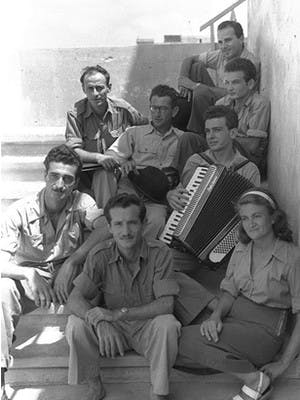
The Chizbatron was the first Israeli military musical ensemble, operating from 1948 until 1950. Haim Hefer funded the ensemble and served as its chief songwriter, basing the band on Chinese communist military bands and Red Army song-and-dance ensembles. Russian-born composer Sasha Argov was the band's music director.
The band often toured by truck or jeep and frequently performed on the front lines in various battle conditions. The poem Hareut (friendship/mateship), written by Haim Gouri, set to music by Argov and originally performed by the troupe, represents the social ideals of “building a nation” and the melting pot, and the creation of "the elegant, the handsome" - the Sabra.
The Chizbatron served as the model for the IDF ensembles/entertainment troupes which were at the forefront of Israeli popular culture. In the late 1960s and mid-70s, many of Israel's top writers, composers and directors had roles in one or more military ensembles.
During this period, numerous famous actors and musicians received their musical education from military bands rather than music schools. In 1978, the chief of the General Staff, Rafael Eitan, disbanded the military ensembles as they were seen to have ceased serving their educational purpose.
One of the legacies of The Chizbatron and IDF ensembles was the implementation of a professional approach to Hebrew entertainment, akin to that of the army, and the mass production of talents and music hits.
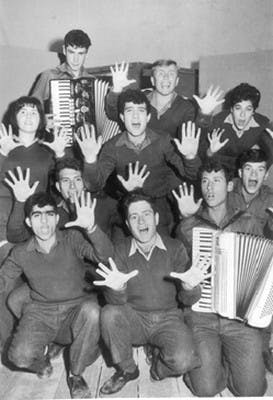
VIDEO: The Nahal Ensemble, In the Nahal settlement in Sinai
3. Reuven Rubin (1893-1974): Artist who painted the 'Zionist dream'
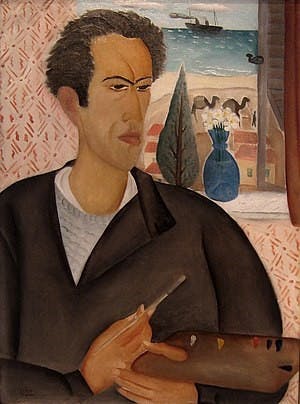
Reuven Zelicovici was one of 13 children born to a poor Jewish Hasidic family in Romania. At the age of 19, he left to study art at the Bezalel Academy of Art and Design in Jerusalem. However, finding himself at odds with the artistic views of the academy's teachers, he left for Paris and enrolled in the Ecole des Beaux Arts.
He had to leave France when World War I broke out and travelled to New York in 1921, where he held an exhibition sponsored by the prominent photographer and promoter Alfred Stieglitz.
Rubin moved back to Europe before returning to Palestine in 1923, where he became one of the founding fathers of Israeli art and the new “Eretz-Yisrael” style. His early paintings from the 1920s seem to portray the "Zionist dream," depicting an idealised perception of the Jewish return to the historical homeland.
His work often featured recurring themes such as the biblical landscape, folklore and people, including Yemenite, Hasidic Jews, and Arabs. In accordance with his integrative style, he signed his works with his first name in Hebrew and his surname in Roman letters.
Rubin's depictions of Tel Aviv growing on the sand dunes, panoramic landscapes of Jerusalem, and numerous scenes of the road to Safed, Tiberias, and the Sea of Galilee became trademark of his work. Over time, his depictions of the Judean hills and the silvery-green Galilean olive groves became increasingly ethereal, immersed in a mystical atmosphere.
In 1948, Rubin was a member of the official committee that chose the new state emblem, a temple menorah surrounded by an olive branch on each side, and later that year he became Israel’s first diplomatic envoy to Romania. In 1973, he was awarded the Israel Prize for his lifetime achievement in art.
His paintings can be found in the Knesset building, the Presidential residence in Jerusalem, the Prime Minister's residence and offices, leading Israeli museums, and in public and private collections in Israel and abroad. In 1983, The Rubin Museum opened in Rubin's former family home in Tel Aviv, showcasing his art in particular and Israeli art in general.
4. Sallah Shabati – 1964 film by Ephraim Kishon, starring Chaim Topol
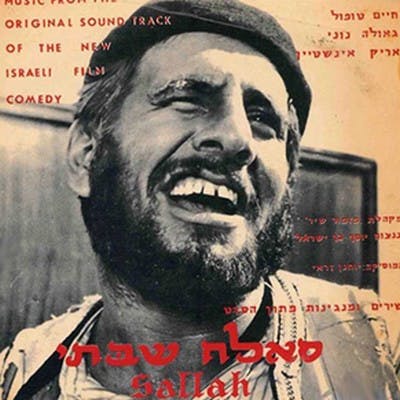
Sallah Shabati is a Mizrahi Jewish immigrant who arrives in Israel with his pregnant wife, an old female relative and seven children. He is taken to live in a transit camp, where he and his family are given a one-room shack.
The film follows Sallah's many attempts to earn enough money to purchase an apartment in a nearby housing development. The film mocks core Zionist institutions like the kibbutz, the kibbutzniks, and the Sabra.
It was the first successful artistic exploration of the distrust many Mizrahi Israelis still feel towards the government and the Ashkenazi establishment, even when they have been successful in their own lives.
The film introduced Chaim Topol to international audiences and was an international success, including a nomination for the 1964 Oscar for Best Foreign Language Film, and winning a Golden Globe Award for Best Foreign Film.
Ephraim Kishon, the director and writer, was a Holocaust survivor born in Budapest who emigrated to Israel in 1949 to escape the Hungarian Communist regime. Having arrived without any knowledge of Hebrew, he quickly mastered the language and by 1952 began writing a satirical column in the Hebrew daily newspaper Ma’ariv.
He wrote the column for about 30 years, and during the first two decades, published a new column almost every day. The script of the comic film The Big Dig was based on a satirical short story he wrote for the column in 1952, only three years after he arrived in Israel.
In an ironic historical twist, as Kishon’s popularity declined in Israel in the late 1970s, his work started achieving huge success in (West) Germany. In Germany alone, sales of his books have reached 34 million and still counting.
5. David Grossman, Amos Oz and AB Yehoshua – “the literary trio”
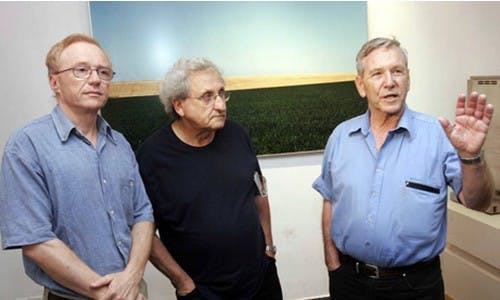
David Grossman, Amos Oz, and A B Yehoshua are Israel's most internationally acclaimed writers. The three “Zionist” writers grew up with the State of Israel and their writing reflects the changes in prevailing social attitudes throughout its history. The three were part of the Israeli “peace camp” and critics of Israel's occupation of the Palestinians.
AB Yehoshua ("Boolie") was born in 1936 to a Sephardi family. His father was descended from Jews who had lived in Jerusalem for generations, while his mother arrived in Palestine from Morocco. He studied Hebrew literature and philosophy at the Hebrew University. In 1972, he began teaching comparative literature at Haifa University and was later appointed a professor.
Yehoshua gained international recognition with his first novel, The Lover (1977), a story of a husband's search for his wife's lover, lost amid the turbulence of the Yom Kippur War. He wrote 11 novels, three short story collections and four plays that tackled a variety of narrative forms from surrealist to historical.
Among his many novels, Mr Mani (1989) is best-known internationally. Rooted in a long psychoanalytical exploration of fathers and sons, this multigenerational novel was inspired by Yehoshua’s own lineage. In 2005, he was nominated for the inaugural Man Booker International Prize – awarded not for an individual publication but for a writer’s body of work. Yehoshua died last year.
Amos Oz was born in 1939 in British-Mandate Palestine. When he was 12, his mother took her own life. Two years later, he left home and joined kibbutz Hulda, adopting the Hebrew surname Oz, meaning "courage". A Tale of Love and Darkness (2002) is a memoir of his family's experience in the final years of the Mandate through to the establishment of the state of Israel.
It is one of the best-selling books to come out of Israel and was later adapted into a film. After completing his army service in 1961, Oz returned to the kibbutz to work in the cotton fields. He published his first book, Where the Jackals Howl, a collection of short stories, in 1965, and his first novel, Another Place, was published in 1966. Oz devoted his time to writing and teaching and campaigned for the Israeli Peace movement.
He published 40 books of fiction, collections of essays, speeches, and letters that have been translated into 45 languages. He died in 2018.
David Grossman was born in Jerusalem in 1954. His mother was born in Palestine; his father came from the Polish province of Galicia. Grossman began to write fiction in his early twenties.
His first novel, The Smile of the Lamb (1983), was the first Israeli novel to be set on the West Bank. His second, See Under: Love (1986), remains his masterpiece, a wildly inventive work of historical reimagination in four parts that the critic Edmund White compared to The Sound and the Fury, The Tin Drum and One Hundred Years of Solitude; author and critic George Steiner called it "one of the great feats in modern fiction."
On August 10, 2006, during the second Lebanon war, Grossman, Oz and Yehoshua held a press conference at which they strongly urged the government to agree to a ceasefire that would create the basis for a negotiated solution. Two days later, shortly before the ceasefire, Grossman’s 20-year-old son, Uri, was killed by an anti-tank missile.
Grossman has published six novels, including two "lighter books", a play, several books for children and an interpretation of the Biblical tale of Samson, Lion's Honey.
6. Israel in the Eurovision Song Contest – Viva La Europe
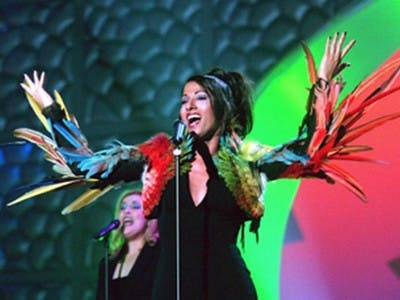
The ambition of Israelis to feel a part of, and gain recognition from, the West was demonstrated in the achievements of the Maccabi Tel-Aviv club in European basketball competitions, as well as Israel's accomplishments in the Eurovision Song Contest.
Israel was the first non-European country to participate in the event and its first appearance in 1973 was successful, with the singer Ilanit finishing fourth. In 1978 in Paris, Israel had its first Eurovision victory when Izhar Cohen and the Alphabeta won with the song A-Ba-Ni-Bi.
In 1979, the Eurovision was held in Jerusalem and Israel won again, with Milk and Honey's Hallelujah, which became an international hit.
Dana International made headlines around the world in 1998 when she became the first openly transgender singer to compete at Eurovision, which she won. Eurovision returned to Jerusalem in 1999. In 2018, Israel won for the fourth time with Netta's song Toy.
VIDEO: Eurovision Song Contest, Hallelujah
7. Ashes and Dust (1988) album by Yehuda Poliker and Ya’akov Gilad – The voice of the second generation
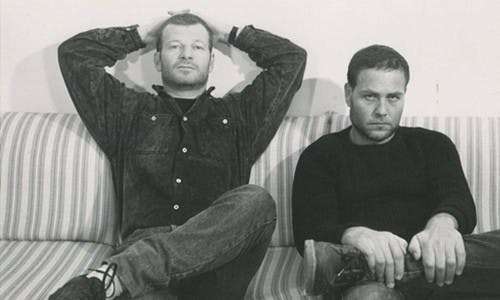
Ashes and Dust / Afar Vevak
And if you're going, where are you going?
Forever is just ashes and dust
Where are you going? where are you going?
Years and nothing is erased …
Take a coat, it'll be cold
Money in your pocket, sugar crystal
If the days are hard
Remember me sometimes
And if it's a more desperate journey
To the hut, to the plot
On the path of the old city
No one will wait in the station …
In almost every list of greatest Israeli songs/albums, Ashes and Dust captures one of the top three places. In January 1988, the singer-composer Yehuda Poliker and the lyricist-musical producer Ya'akov Gilad released the album Efer Veavak (Ashes and Dust), one of the most influential Israeli albums ever recorded.
Eight of its 12 songs deal directly or indirectly with Holocaust-related themes from varied perspectives. Within a month, the album became a bestseller, and by the end of the year, this mixture of rock 'n' roll, Greek, Western, and Arabic rhythms had sold more than 40,000 copies, a large number for the Israeli market.
The title song is based on a letter Gilad wrote to his mother before her first trip back to Poland, "And if you're going, where are you going? Forever is just ashes and dust." The record was followed by a documentary, Due to That War, which follows the musicians’ relationships with their Holocaust survivor parents.
The film and record took off, said Yehuda Bauer, a professor of Holocaust studies at the Hebrew University of Jerusalem, because "people were waiting for someone to express what they felt". For years, people in Israel had talked about camp survivors, he said, but little was said about the impact on their children.
8. Eretz Nehederet (A Wonderful Country) – TV satire

Eretz Nehederet made its debut on November 7, 2003. The show has been described as a cross between Saturday Night Live and The Daily Show, combining mostly topical sketches with an overall news-show format. It features satirical references to current affairs of the past week through parodies of the people involved, as well as the thoughts of recurring characters.
Created by Muli Segev, David Lifshitz, and Asaf Shalmon, it is one of the most watched and influential shows on Israeli TV, and one of the longest-running scripted shows on Israeli television. It features a familiar cast of Israeli comedians and actors, some of whom have been with the show from the start.
Surprisingly, it's not only political figures who have made the show so popular, but also characters like a supermarket checkout Russian old woman, a religious “wannabe” rabbi and a lesbian settler, satirising various aspects of Israeli society including the “start-up” culture.
9. Mizrahi Music / Muzika Mizrahit
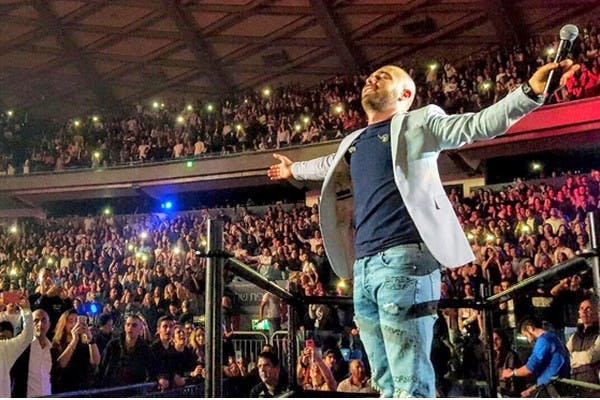
The domination of Eastern-European/Ashkenazi Jews and culture in pre-State Israel, with the encouragement of the establishment, was particularly noticeable in the emergence of “Israeli music”. Composers who immigrated from Russia, such as Sasha Argov, Nahum Nardi, and Hanina Karchevsky, brought with them Russian folk tunes and musical styles.
Songs in the early days were often Russian folk tunes with translated or new lyrics in Hebrew. As the country developed and radio and TV became more prominent, Western influences penetrated, but the music style and influence of the immigrants from Arab and Middle Eastern countries didn't find much space, being limited to specific festivals and channels or sold on cassettes in markets.
This was the Mizrahi music which was largely based on Middle Eastern and Oriental musical traditions. It is usually fun, easy to sing and dance to, and occasionally even soulful and moving. In the 1980s, Mizrahi music penetrated the mainstream and by the 2000s, it can even be said that Mizrahi pop and music had become the mainstream.
Artists such as Omer Adam, Sarit Hadad, and Eyal Golan are among the most popular singers in Israel. The lighter, happier version of Mizrahi music, known as Mizrahi pop, has broken the boundaries of Israel and become an international hit. One example is Tel Aviv by Omer Adam (featuring Arisa), which has tens of millions of views on YouTube and is featured in the video game Just Dance.
VIDEO: Tel Aviv, Omer Adam (featuring Arisa)
10. Hit TV series: Fauda, Shtisel, Hostages, In Treatment

Israel was late to establish a television broadcasting service and infrastructure. Ben-Gurion did not favour the establishment of TV stations, as he thought it would have a “negative impact” on Israelis. In the early 1960s, television broadcasts from Egypt, Lebanon, and Cyprus gradually became available to Israelis through TV sets placed in public places such as cafes. Only in 1966 did Israel inaugurate a state-owned channel. Colour transmission was introduced gradually from 1977.
With only one channel controlled by the government, there was not much room (or need) for high-quality original TV production. The introduction of multichannel cable television in 1989 changed the TV and film production scene, as one of the terms of use for the different independent channels was original production. In parallel, TV and film faculties such as the Sam Spiegel Film School and The School of Film and Television at Tel Aviv University started to operate and introduced high-quality courses.
The investment in original productions and education paid off, as Israeli television has been creating waves in the global TV industry since the early 2000s. The wave started with US dramas Homeland and In Treatment, which were remakes of Israeli originals.
In the past 10 years, Israeli TV programs have been everywhere. Fauda, When Heroes Fly, Hostages, Shtisel, Srugim, A Touch Away, Prisoners Of War, Mekimi and others are popular on streaming services such as Netflix and Amazon and many have achieved “crossover” into mainstream, non-Jewish audiences.
VIDEO: Shtisel season 1 trailer
